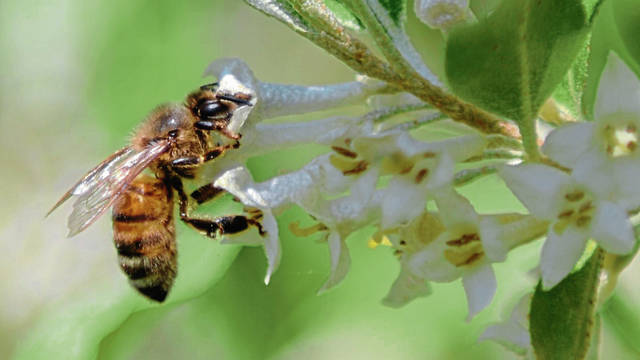Why this spring's pollen counts are bad for allergy sufferers
If it feels like a bad spring for allergies, blame it on higher-than-normal pollen counts.
Pollen counts throughout the region are reaching the highest levels that can be measured by the National Allergy Bureau, said Dr. Merrit L. Fajt, an allergist with UPMC.
“The higher the count, the greater the chance that people suffering from hay fever will experience symptoms when they are outdoors or exposed to outdoor air,” said Fajt, who described the bureau’s pollen counting stations as a trusted source of information.
A pollen count or mold count is based on the measurement of the number of grains of pollen or mold spores in a cubic meter of the air. There is a pollen tracking station for Pittsburgh that is located in Monroeville. The stations use air sampling equipment to collect airborne pollen and spores that are then examined microscopically.
They do not give specific numbers but instead give ranges: high, moderate, low and absent. Tree pollen and mold were listed Wednesday as “high concentration.” The tree pollen count remained high Thursday.
The signs that you are suffering through a bad allergy season are obvious: itchy, watery eyes, non-stop sneezing, post-nasal drip, the roof of your mouth itches. This year’s allergy season is worse than normal because of warm, dry weather, said Dr. Brian Lamb, Allegheny Health Network internal medicine physician.
“We’re seeing a lot more patients coming in with complaints of allergies and sinus congestion and a lot of people think they have sinus infections,” Lamb said. “A lot of it really is just reactions to the allergens in the air right now.”
We have had a spring with a lot of warm weather and not a lot of rain. The lack of rain keeps the pollen count higher, he said.
“It’s the tree pollen that’s been really high. We’re seeing all these beautiful flowering trees, but when everything is looking pretty it’s actually because their pollen counts are going up as well and they are getting ready for the reproductive stage,” said Lamb. “We have been seeing some really big pollen counts in the last couple of days.”
There is evidence showing a trend toward increased pollen production and release due to climate change, said Dr. Leonard Bielory, a fellow who oversees pollen counting for the American Academy of Allergy, Asthma and Immunolgy.
“Climate is definitely a factor in pollen production and release, increasing as much as 20% over the past 10 or 20 years. It is definitely trending worse,” Bielory said.
“We’re actually seeing an earlier onset of the different pollen seasons,” said Dr. Deborah Gentile, director of asthma services for East Suburban Pediatrics in Murrysville. “So, we see them starting earlier, ending later, and we’re actually seeing counts peak much higher in more recent years. That’s being seen in different cities across the U.S., and a lot of it is being attributed to global climate warming. With the warmth in general, there are more plants blooming and releasing pollen.
“I actually see patients sometimes that are adults who have never experienced symptoms before. And what’s happening is that they are being exposed to very high levels of pollen that we have never seen before,” Gentile said.
So, what can allergy sufferers do for relief? Fajt, an allergy sufferer herself, said she has been hit especially hard this year. She said simple steps can mitigate the effects of pollen and mold.
“If you have been outside, and this is what I have been doing, you can do a saline rinse of your nose,” said Fajt. “There are different products available at the pharmacy, and you don’t need a prescription. That’s a good way of rinsing out any pollens or things that may be stuck on the sinuses.”
Lamb recommends using an antihistamine, but exercising caution because they can be sedating, and washing your hands and face when you come inside as well as staying inside during the hottest part of the day.
“Try to limit outdoor activities until after the rain has fallen,” Lamb said. “If there is rain in the forecast, the best time to do something outside is after it has rained because that tends to bring the pollen counts down.”
Lamb also recommends keeping windows shut.
“During the spring, everyone loves to open their windows and get their house aired out. But when you are airing your house out, you are also letting all that pollen in,” Lamb said.
“You also want to make sure you are washing off your outdoor furniture, your outdoor cushions because all of that is going to be collecting pollen, and it’s going to be getting on you.”
Remove the ads from your TribLIVE reading experience but still support the journalists who create the content with TribLIVE Ad-Free.


